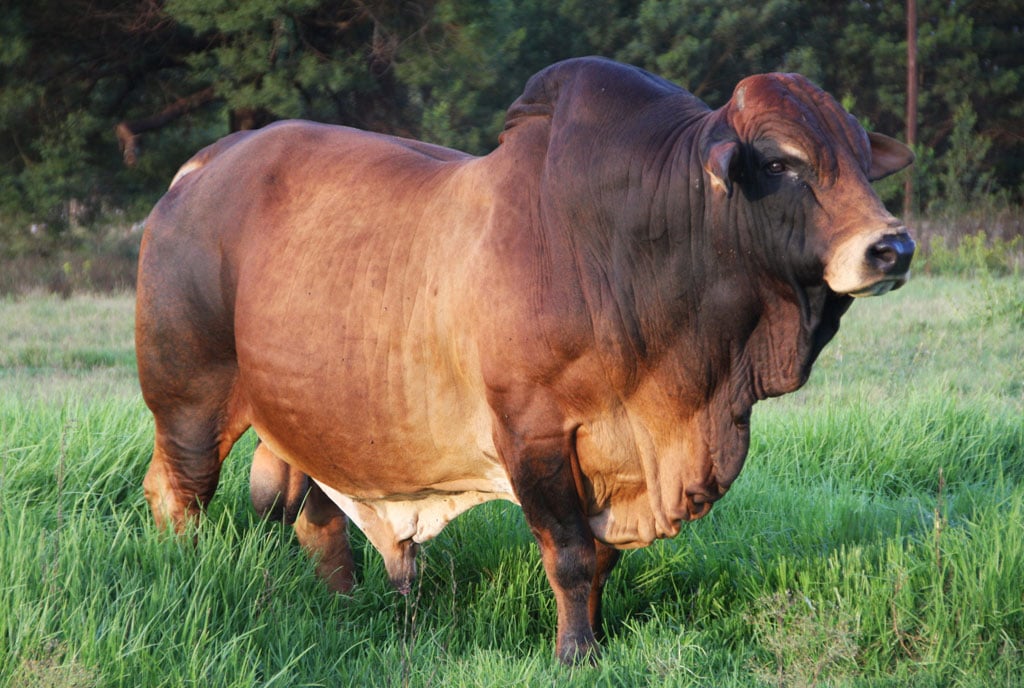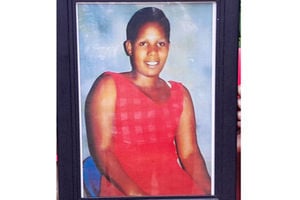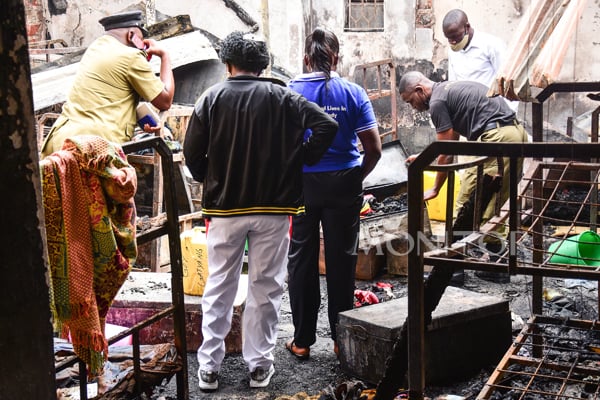Alice Lakwena: From fishmonger to rebel leader

Alice Auma, a former fishmonger in Gulu District. FILE PHOTO
Yoweri Museveni’s National Resistance Army (NRA) defeated Gen Tito Okello Lutwa’s government and took over power following a five-year guerrilla war from 1981 to 86.
There seemed to be a sign of peace and stability in the country with the Luweero war having ended with the fall of Kampala on January 26, 1986. But one region, northern Uganda, became a source of constant frustration for the newly-established NRA government.
Soon after taking over, President Museveni’s immediate problem emerged. She was a 30-year-old woman, Alice Auma Lakwena, a former fishmonger and a flour trader in Opit railway station in southern Gulu.
Although Auma neither had a military background nor proper education having only completed Primary Seven, she formed the Holy Spirit Movement (HSM) or Holy Spirit Mobile Force (HSMF). The group expanded quickly and covered a wide area in less than a year.
Background
Born in 1956 to Severino Lukoya and Ibarina Ayaa in Bungatira Sub-county in Gulu District, Alice Auma was raised as an Anglican but later converted to Catholicism. She attended Bungatira Primary School up to Primary Seven.
She later got married to an unidentified man in Patiko but they divorced on grounds that Auma was barren. She again got married to a one Alex Okello for three years, but they separated for the same reason.
After the failed marriages, Auma returned to her father’s home in 1979 and engaged in selling smoked fish at Opit railway station. She also bought flour which she sold in Pakwach.
According to Heike Behrend’s book Alice Lakwena and the Holy Spirit War in Northern Uganda 1985-1987, Auma became possessed by a spirit in January 1985 and was unable to either speak or hear.
In May the same year, Auma disappeared for nearly two months only to return with a strange message. She claimed that Lakwena (Luo word for messenger) had guided her to a place called Wang-Jok at Murchison Falls National Park where she had been for 40 days receiving instructions for work as a spirit medium with a traditional religious role.
According to Auma, while at Wang-Jok where the River Nile flows strongly among trees and over rapids, she was welcomed jubilantly by all animals in the park.
She claims that she had a conversation with the animals to talk about the Luweero Bush War that was raging in Uganda at the time.
“You animals, god sent me to ask you whether you bear responsibility for the bloodshed in Uganda,” Auma is quoted as having said.
Behrend in his book writes that the animals denied the blame. Buffalo displayed the wound on his leg while hippopotamus showed the wound on his limb.
Auma then asked water about the war to which water said animals with two legs (people) were killing their brothers and throwing their bodies in water. Then the spirit Lakwena asked Auma to go and fight the sinners.
On her return home, the spirit led Auma to Mt Kilak where the mountain greeted her arrival with an explosion.
After deep discussions with the mountain, Behrend writes in his book, Lakwena told Auma who was to blame for the suffering and bloodshed in Uganda.
Lakwena then gave Auma stones and water with which she returned to Opit and began healing people. Besides the railway, she built a small temple of mud and thatch. In it, as god’s representative, Auma would sit on a throne and give orders.
Alice Auma revealed very little about the spirit Lakwena. She said he was the spirit of an Italian army captain who had drowned in River Nile during the First World War and he spoke 74 languages, including Latin.
Healer to military commander
On August 6, 1986, according to Behrend, god ordered Auma to stop her work as a healer and form the Holy Spirit Movement to fight evil and bloodshed which was being perpetuated by the NRM government.
The divine mission required her to overthrow the NRM regime and redeem Uganda from bad governance.
“The good lord has appeared to me and told me to change my work as a doctor to that of a military commander for one simple reason: It is useless and futile to cure a man today only to be killed the next day. So it became an obligation on his part to stop the bloodshed before continuing his work as a doctor,” Auma noted.
Her divine mission was to purify first her native Acholiland and then Uganda.
There was resentment among many in northern Uganda at the time against the NRA. Moreover many soldiers fleeing back to Lango and Acholi in January 1986 after the defeat of Gen Tito Okello in Kampala embraced the only opportunity that presented itself to rid themselves from the ‘occupying forces from the south’.
After a short time, Auma’s Holy Spirit Movement started absorbing thousands to its camp who came to listen to Lakwena’s ‘holy’ doctrine. It had about 10,000 members.
Alice Auma expanded her group and set up camp in Kilak in Pader District which became the starting point of her journey to capture Kampala. She set up rules which she said Lakwena required her to dictate to the fighters twice a day, at 7am and 7pm. They included:
Rules of engagement
• They did not need to use guns of any type, because they were holy. Any captured weapons were to be burnt immediately.
• Each fighter had to burn his witchcraft charms and had to appease the spirit if he had killed previously.
• As they were advancing in the battlefield, they were to sing Catholic hymns.
• Each fighter had to be smeared with a mixture of shea nut oil and red soil (pala). The mixture would provide immunity and bounce off the enemy bullets.
• Water was to be treated with respect and each river they were to cross had to be “bought” with a coin and a shell to make it block off enemies or drown them.
• Each fighter had to have strictly two testicles; neither more nor less. Anyone with less or more had to leave the camp immediately.
• No eating pork, shea nut oil or honey. They were to get rid of pigs because they were unholy. All collection of shea nut oil and honey were to be taken to Auma for the treatment of wounded fighters.
• Stones if thrown at the enemies would explode like a grenade. No walking stick in the battlefield. No hiding behind an anthill. No smoking.
• The fighters were to go to battle with complete courage, determination and fearlessness. Anyone who went to the battlefield with fear and doubt would be caught by the enemy’s bullets.
• No stealing or taking something without prior permission from the owner. If any of the fighters made a mistake, he was to apologies to the owner immediately.
Around Auma stood three charcoal stoves on which little replicas of the enemies were heated until they glowed and then waved over the soldiers’ heads to bless them.
The treatment of wounded fighters had to be administered by either herself, a virgin boy or an elderly woman who no longer had sexual relations. The treatment included cleaning the wound and applying the shea nut oil, twice a day, in the morning and evening.
Auma’s manipulation seemed to work at the beginning. For several initial encounters, the NRA soldiers faced by rampant hymn singers dropped their weapons and fled.
Ill-fated journey to capture Kampala
Alice Auma then led her HSM fighters from Acholi towards Lango to capture Kampala.
They reached Corner Kilak in Pader where they were confronted by NRA in a major battle.
Auma soon unleashed her fighters armed with nothing but stones, courage and faith against heavily armed NRA who had automatic machine guns, artilleries, rocket propelled grenades (RPG), armoured vehicles and helicopter gunships.
They poured in the battlefield in thousands and charged against the enemy, singing their popular war song, “Wan wayee ni Yesu oto, Yesu ocer, Yesu bino dwogo.” (We believe in Jesus’ death, Jesus’ resurrection, and Jesus’ eventual return)
As several hundreds fell down dead or wounded from NRA’s bullets, still more thousands kept charging, pelting stones until they broke into the enemy’s battle line, hitting some NRA soldiers to death with their “holy” stones.
The battle at Corner Kilak lasted several hours and the NRA soldiers were forced to retreat in what was said to be a “mercy retreat”. They had caused several casualties among the HSM fighters, many of whom were innocent victims of Auma’s canny manipulation.
But to Auma, she had won the battle, and those who died among her fighters had violated the holy war rules.
Auma’s HSM advanced southward and crossed into Lango. After putting several camps in Aromo and Alito sub-counties, they headed to Ogur, about 8kms north of Lira Town, where another fierce battle took place at a village called Oponi, leaving the bodies piled into heaps.
The battle at Oponi is termed as “the battle at 2” because Auma had told her fighters that morning that at exactly 2pm they would receive the “visitors” (NRA). At the peak of the war, Auma unleashed about 15,000 fighters against the NRA.
Again the NRA retreated towards Lira Town, and to Auma, Lakwena had given her another victory.
After a few days, another battle was fought on the outskirts of Lira Town at the valley opposite Lira Catholic Cathedral. The valley was filled up with bodies.
From Lira, Alice Auma, determined to reach and capture Kampala, advanced towards the eastern route to Soroti. And after several battles, and what she considered spectacular victories on her side, she attracted more followers and supporters in eastern Uganda until they reached Jinja District.
However, towards November 1987, the influence of the ‘holy spirit’ and Auma’s own power seemed to be fading. The bullets no longer bounced off and the enemies (NRA) no longer fled the battle.
In Jinja, about 80kms east of Kampala, the Holy Spirit Movement were smashed by heavy artillery fire of the NRA, forcing Auma to abandon her fighters and flee on a bicycle towards the east. She eventually crossed to Kenya in November 1987.
She lived in Ifo refugee camp near Dadaab in northern Kenya until her death in 2007.
Shortly after Auma’s military failure in Jinja, Severino Lukoya, her father, started a fresh rebellion in Kitgum under the guidance of the ‘holy spirit’. But unlike his daughter, Lukoya was weak and his group did not expand much.




